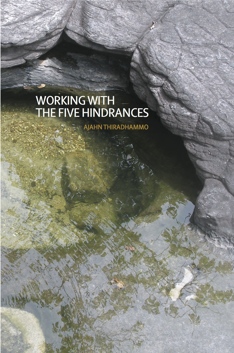At least four types of arahant are designated: those who possess the triple knowledge (te-vijja), those who possess the six kinds of psychic powers (abhiññā), those who are ‘liberated-both-ways’ and those who are liberated by wisdom (S.I,191). The one liberated both-ways is said to be able to ‘attain with the body and abide in those liberations which are peaceful, beyond forms, immaterial, and his outflows are exhausted through seeing with wisdom’ (M.I,477). ‘Liberated by wisdom’ means that they are not able to attain the ‘immaterial liberations’ but the outflows are exhausted. This would include the so-called ‘dry vision’ or ‘dry insight’ (sukkha-vipassaka) arahant, whom the commentarial tradition interprets as not having attained the absorptions. It seems that the majority of arahants were of the ‘liberated by wisdom’ type, as one discourse mentions that of 500 arahants present there were sixty each of the first three types and thus 320 liberated by wisdom (S.I,191).
The “liberations which are peaceful, beyond forms, immaterial” would relate to the four formless absorptions (arūpa-jhāna).
S i,191 is the Pavāraṇā sutta, the “invitation”. It is the 7th discourse from the Vaṅgīsasaṃyutta (the connected discourses with Vaṅgīsa), from the 8th chapter of the 1st saṃyutta (the Sagāthāvagga, the book with verses, or book of kindred sayings): it might therefore be listed as SN 215, SN 8.7, SN 1.8.7, or even SN 8.1.7
Funnily, the numbers given in the Chinese parallels differ, but they also clearly indicate that the majority of arhats were those released by wisdom: depending on the versions, one might get 90 with the three knowledges, 90 both ways and 320 by wisdom, or even 90 with the three knowledges, 180 both ways and 230 by wisdom. Sectarian differences might be manifested through these variations (notably the ekottarāgama 32.5, which introduces a non-arhat in the mix, by the Mahāsāṃghika, a school which did not consider the abhidhamma as canonical and therefore had no issue with correcting it).
Why this text matters
This discernment among the arhats might remind us of another sutta, the (Mahā) Cunda Sutta (AN 6.46). In that sutta, it is advocated to praise both the monks cultivating concentration and calm-abiding, and the monks cultivating insights, without bias linked to one's personal preference…
These various texts are interesting to look at, in particular when one considers the historical evolutions of the schools.
Most notable is the evolution of the Theravāda school, meant to be as
orthodox as one can get, on the occasion of the third Buddhist council (a
key document of this council is the Kathāvatthu, or “Points of
Controversy”, which became the fifth book of the Abhidhamma, in
spite of not being the Buddha's words).
This council was convened many decades after the death of the Buddha,
supposedly under the patronage of Emperor Aśoka. To curtail ordination by
those only interested in avoiding taxes, the Emperor asked the elder
Moggaliputta Tissa for a criterion to separate true monks from lay
people in monastic robes. Moggaliputta Tissa famously told Aśoka
that the doctrine taught by the Buddha was the Vibhajyavāda, the
Doctrine of Analysis.
It is unclear what this ‘Analysis’ exactly amounted to, except it considered
that the arising and ceasing of phenomena did suggest temporary existence,
in opposition to the Sarvāstivāda view (existence of all dharmas in
the past, present and future, the “three times”… which helped considering
causality through time, and e.g. why a seed could only give rise to a
specific specie of tree, and not to another specie).
Such a criterion had two major consequences. Firstly, it led to a purge of
schools which the Theravāda was in competition with, rather than simply
a purge of fake monks… Secondly, it pushed many toward the insistence that
‘insights’ are the main (maybe even the sole) source of Wisdom. These people
fell for the classic mistake of conditioning the attainment of
nibbana (the un-conditioned) by “only one path”. Religious
righteousness easily follows, as well as exclusions and a general lack of
consideration for other traditions and inter-faiths dialogue.
It is therefore valuable to remember that the Buddha didn't adhere to a view according to which there's only one way to cultivate a wholesome way of life, or to Liberate oneself from unsatisfactoriness. Accepting a multiplicity of wholesome views and paths (e.g. in adequation with each person's hindrances and needs) supports dialogue and peace.
This book is freely available, and it represents well how Buddhism favours appropriate antidotes to specific hindrances, instead of blanket ‘truths’ or a one-size-fits-all path.

